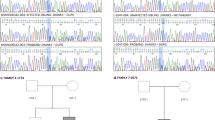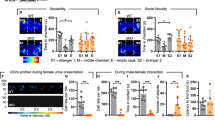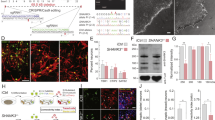Abstract
Autism spectrum disorders are a group of neurodevelopmental disorders with a complex and heterogeneous etiology. Studies have shown that genetic factors play an important role in the aetiology of these diseases. Recently, de novo mutations, frameshifts and deletions have been described in the SHANK3 gene, also known as ProSAP2 gene, which encodes a synaptic scaffolding protein. All the participants of this study had normal karyotypes and underwent screening for Fragile-X syndrome. Subsequently, they were analyzed by direct sequencing of different points of exons 8 and 22 of the SHANK3 gene. None of the study participants presented with changes in these regions. These findings may be due to the fact that mutations, deletions and duplications of the SHANK3 gene are rare.
Similar content being viewed by others
Article PDF
Author information
Authors and Affiliations
Rights and permissions
About this article
Cite this article
Bossolani-Martins, A., Rodrigues-Lisoni, F., Nogueira, M. et al. Molecular Evaluation of exons 8 and 22 of the SHANK3 gene in Autism Spectrum Disorders. Nat Prec (2010). https://doi.org/10.1038/npre.2010.4200.1
Received:
Accepted:
Published:
DOI: https://doi.org/10.1038/npre.2010.4200.1



